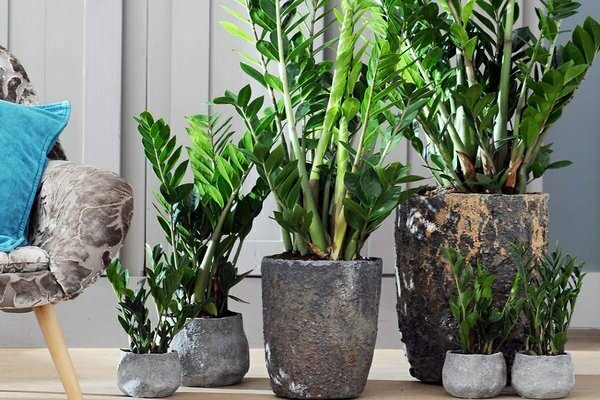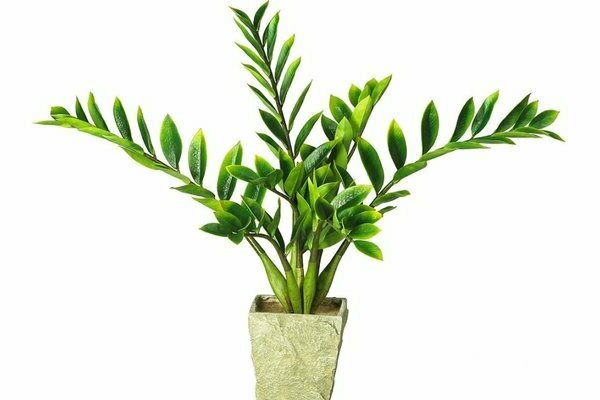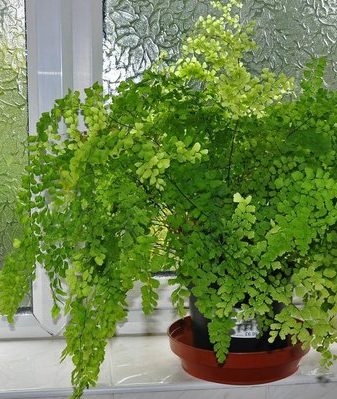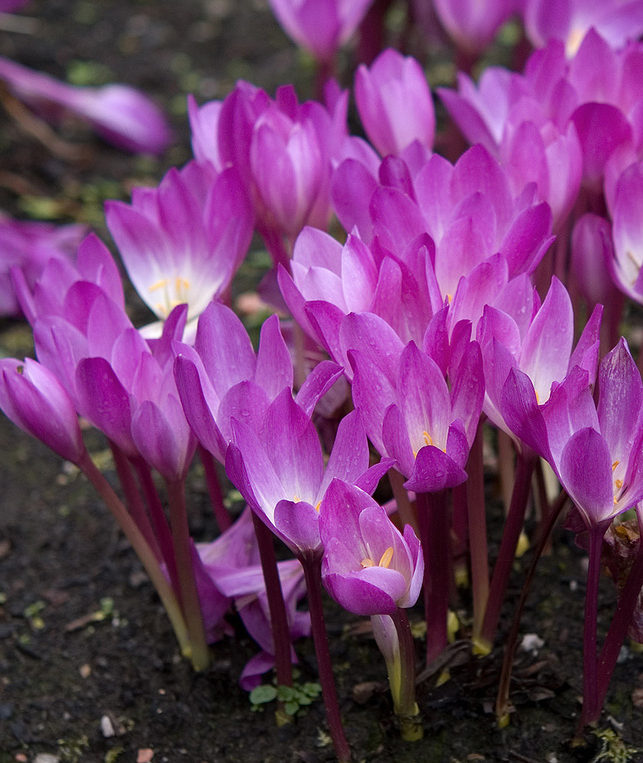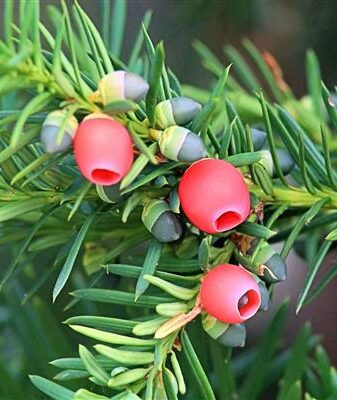Zamioculcas
Content:
Zamioculcas: flower description
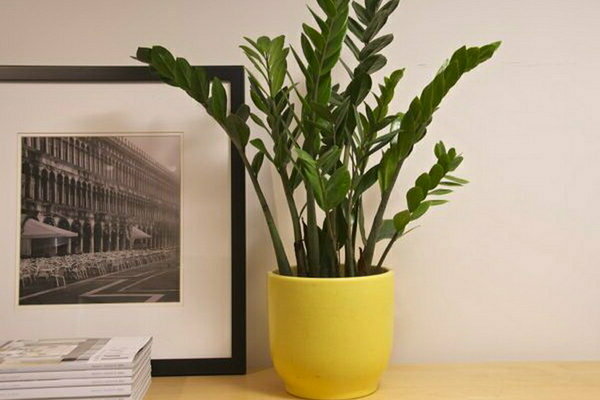
Home flower Zamioculcas: plant photo
Zamioculcas ("Zamioculcas") is a monotypic culture from the aroid family. In natural conditions, it lives in desert spaces. Since it is a succulent plant, it retains moisture in its foliage, stems and root system. This plant gained its fame because of its exotic appearance and ease of care.
The root system is well developed. The foliage looks like it is covered with wax, rather large and fleshy.
The flowering of Zamioculcas is quite rare and difficult to achieve indoors. It looks like a cob, but it contains very small flowers. It grows rather slowly, but can reach a height of one hundred centimeters.
Zamioculcas: growing and care at home
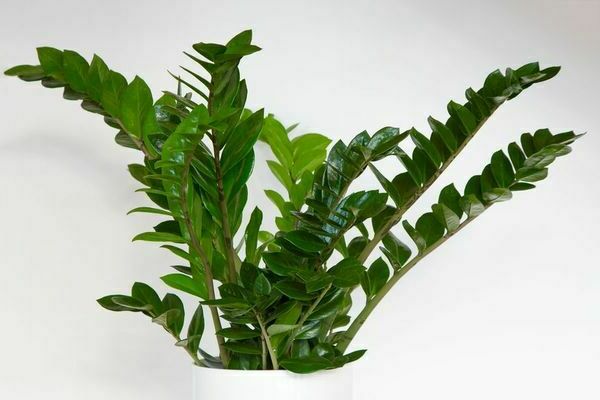
Home flower Zamioculcas: plant photo
Although this is an unpretentious plant, some rules will have to be followed.
Temperature regime
The room temperature we are accustomed to is quite suitable for him. In winter, a temperature of sixteen to eighteen degrees is approximately perfect, but it should not be allowed to drop below twelve.
Required lighting level
The best option would be a well-lit place, but with diffused light. For the summer period, you can take it out to the balcony or porch. In winter, it is better to put it closer to the sun.
The right watering
From spring to autumn, watering Zamioculcas should be moderate. That is, liquid stagnation in the sump and earthen coma should not be allowed, this can provoke rotting of the root system. In winter, it is necessary to water Zamioculcas very rarely, so that the soil dries well. This plant does not tolerate prolonged drought normally.
Demand for air humidity
It is not necessary to spray the plant. You just need to wipe the fleshy foliage from dust and dirt.
Transplant rules Zamioculcas
It is necessary to transplant the Zamioculcas bush every year, in the spring. The soil should be rich in trace elements, macronutrients and nutrients. You can purchase a ready-made soil mixture at a garden store, or you can mix it yourself from sod land, leafy soil, peat soil and coarse sand. You can also add organic humus. Mature plants are replanted every two years. The capacity for transplanting Zamioculcas should be suitable for the size of the root system of the plant. There must also be a good drainage layer.
How to propagate Zamioculcas?
There are three suitable breeding methods for Zamioculcas:
- Division of the rhizome;
- With foliage;
- With the help of cuttings.
When propagating Zamioculcas using foliage, you will need to dry the leaflet. Cuttings or foliage need to be rooted with heated soil, as well as using root formation stimulants. The rooting process can take sixty days. This is the longest procedure. A healthy and intact leaf is separated from the plant, it needs to be dried for a couple of days. Then plant it in a small container with loose sandy soil, it needs to be buried by about thirty percent. Drizzle and cover with a plastic cup to create a greenhouse effect.The mini-greenhouse must be regularly ventilated so that there is constant air circulation. It will take about six months to wait for the formation of the root system and tubers.
It will not work to buy Zamioculcas seeds. Therefore, only vegetative breeding methods remain. A new plant can be obtained from any grow of the parent specimen.
How to properly care for a plant at home
At home, this species began to be cultivated relatively recently. Which is strange, because it is great for warm apartments with dry air. It is also not scary to forget to water him, he is used to droughts. Feels great both in the bright sun and in partial shade. The temperature of its content can vary from twelve to thirty degrees Celsius. You do not need to spray it.
In principle, it is not difficult to take care of Zamioculkas for him. It is worth remembering not a lot of information, he likes:
- Warmly;
- Bright lighting;
- Insufficient watering.
Does not love:
- Dampness;
- High air humidity;
- Low temperatures.
Based on this, it is necessary to water it only when the earthen lump is completely dry. And in winter, you can water it once or twice in thirty days.
Seat selection
The best option would be a sill facing south. On the north window, he will also feel good, but then his foliage will become slightly smaller and it will need to be watered less often and less abundantly. In the summertime, it can be transferred to a balcony, porch or veranda.
Suitable soil
Here he also has no special complaints. Almost any soil mixture is suitable, but with the exception of clay. In general, you can just buy ready-made soil in a garden store. However, it is very important to provide the plant with a good drainage layer.
Top dressing and fertilizers
This plant does not need additional nutrition. But if you want to pamper your pet, then it is important to purchase special fertilizers for cacti and succulents. You can fertilize the plant only during the growing season, but as carefully as possible, about once every thirty days. But it is worth remembering that it is better not to feed the zamioculcas at all than to overfeed it. You cannot fertilize in winter.
Zamioculcas zamielistny
This species is from East Africa. Tuberous rhizome. The foliage can grow up to forty to sixty centimeters in length. Interestingly, its leaf is divided into eight to twelve leafy feathers. The base of the sheet is quite thick, which serves as a place for the supply of liquid. The foliage is dense, leathery. During a dry period, the plant can throw off some of its foliage so as not to evaporate excess moisture. Also stores moisture in root tubers. It can reach a height of one hundred centimeters.
Possible diseases of Zamioculcas
This culture is quite resistant to diseases and insect pests. The only thing that can harm the plant and provoke its wilting is not proper care.
Excessive watering
In case of waterlogging of the soil, the root system begins to rot. In this case, the bush must be removed from its pot, cut off those parts that have rotted. Slices and remaining rhizomes should be sprinkled with charcoal for disinfection. Then dry it and transplant it into another container with fresh soil. It is also important to adjust the frequency and volume of watering the plant.
Yellow foliage
This does not mean that the plant is sick. Since the zamioculcas grows rather slowly, new foliage is formed in it. Because of this, old leaves gradually turn yellow and fall off. With all this, even dark spots may appear on the stems of the plant.
The plant turns yellow, but does not form anything new
This is where you need to start worrying. The cause of this ailment may be:
- Sharp jumps in temperature;
- Cold drafts;
- Strong wind currents;
- Lack of moisture;
- Attack of insect pests.
Insect attack
This plant, in addition to improper care, can be attacked by spider mites, scale insects, aphids.
Spider mite
The spider mite is a small red insect. It feeds on plant sap, and weaves its cobweb on the back of the leaf. You can get rid of it by spraying and flushing the foliage.
Shield
The scale insect is a small insect. With her, the plant becomes covered with brown spots, like shields. Adults live under them, and then larvae emerge from them, which multiply very quickly. You can destroy it by spraying. You also need to treat the plant with insecticidal agents.
Aphid
Aphids are a very small pest, can have colors: green, gray and black. It sucks nutritious juice out of the foliage, which causes the foliage to dry out and curl. It multiplies very quickly. You can destroy it with special drugs.
After the processing process, the plant must be rinsed well, covering the soil with something. If one treatment did not help, then you need to carry out a second one.
Conclusion
Even if Zamioculcas has lost all of its ground part, then it is not necessary to immediately throw it out. You need to get it out of the pot and examine the tubers, if they are healthy, then they need to be transplanted into another container in fresh soil. Since this type of plant is from the desert, then under adverse conditions it saves its life in this way. It is a hardy plant. Therefore, you can just wait for new shoots.
Zamioculcas: photo
